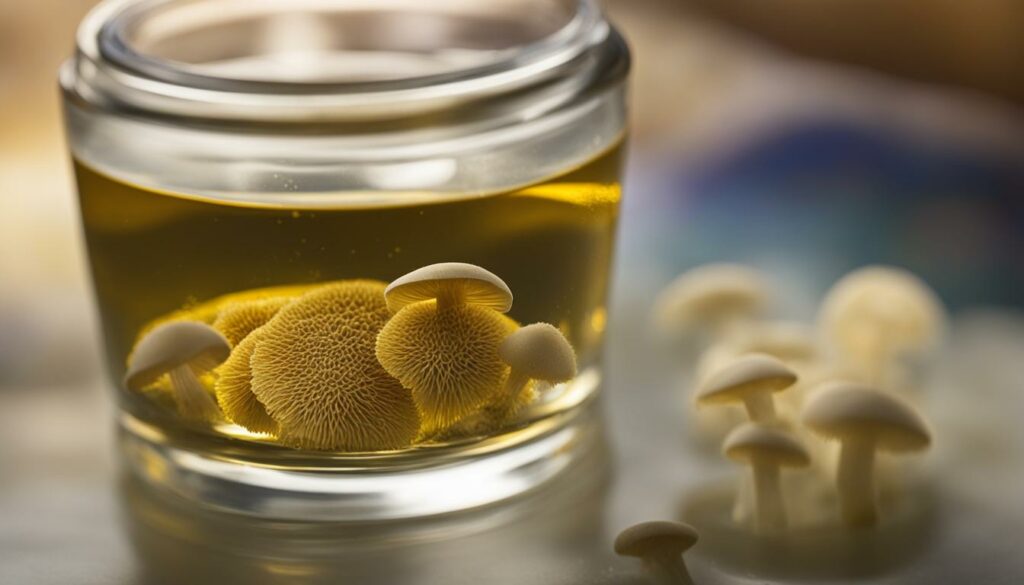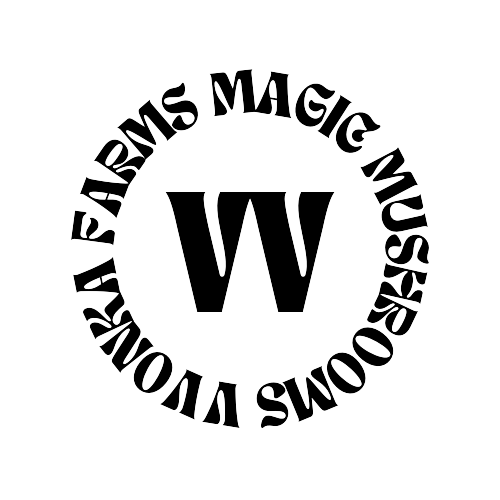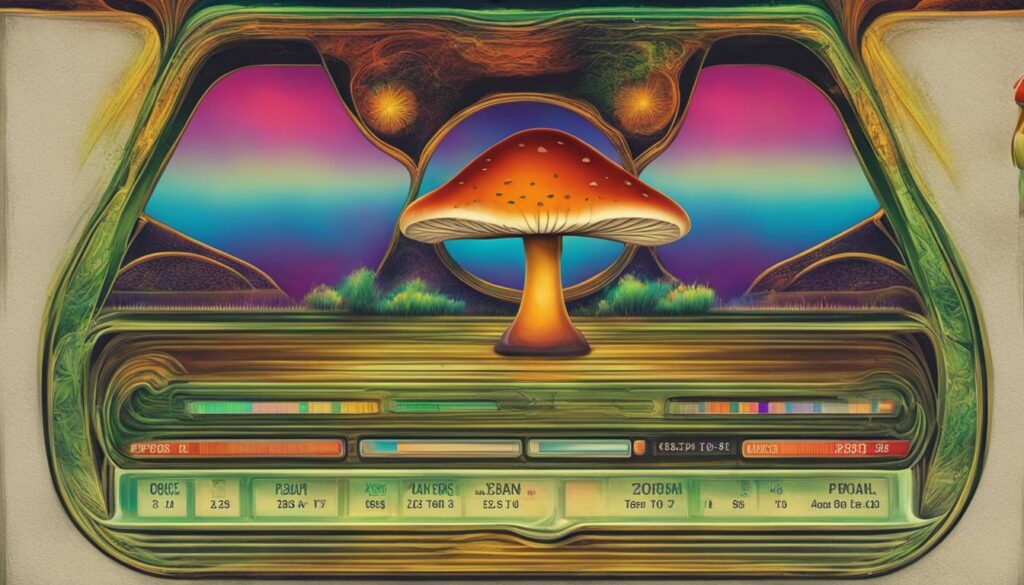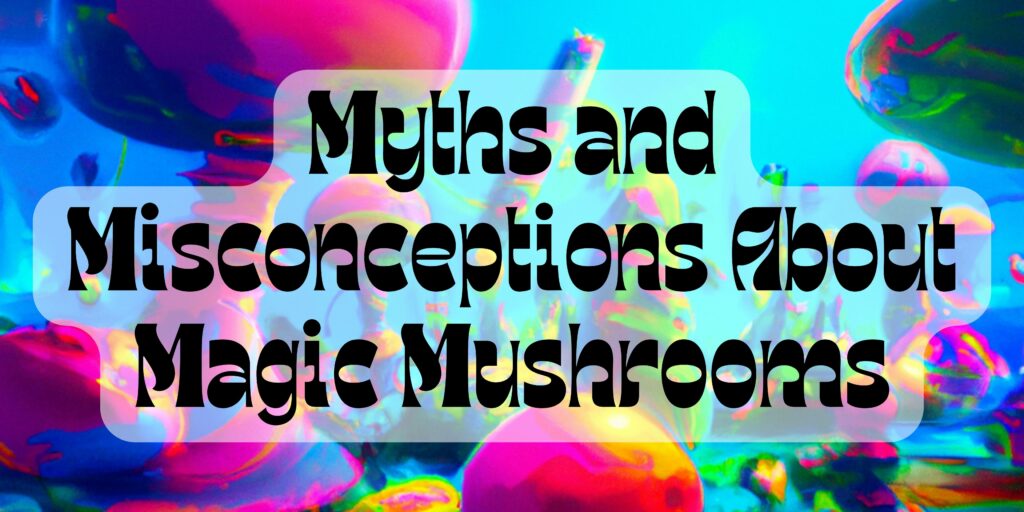Are you curious about whether shrooms can be detected on a drug test? Let’s dive into the topic and separate fact from fiction.
Psilocybin, the psychedelic compound found in magic mushrooms or shrooms, is not typically detected in routine drug tests. Most standard drug tests, including urine tests commonly used by employers, do not screen for psilocybin. However, there are specialized tests that can detect hallucinogens, including mushrooms. These tests may include markers for psilocybin, LSD, mescaline, peyote, and other similar substances. It’s important to note that while shrooms are unlikely to show up on a standard drug test, there have been instances where mushrooms have been laced with other drugs such as PCP, which can be detected by most drug panel tests.
Key Takeaways:
- Most standard drug tests do not screen for psilocybin, the compound found in shrooms.
- Specialized tests can detect hallucinogens, including mushrooms.
- Shrooms can be laced with other drugs, which may be detectable on a drug test.
- It’s important to be aware of the specific requirements and limitations of drug tests.
- If you suspect someone has consumed laced mushrooms, a specialized drug test may be necessary.
How Long Do Shrooms Stay In Your System?
When it comes to detecting magic mushrooms in drug tests, the length of time they stay in your system can vary based on several factors. These include the dosage of shrooms consumed, the frequency of use, individual metabolism, and other individual factors such as age and weight. It’s important to understand the detection windows for different types of drug tests.
Urine tests, which are commonly used for drug screening, can detect shrooms for up to 24 hours after ingestion. This is because psilocybin, the active compound in magic mushrooms, is quickly metabolized into psilocin, which can be detected in urine. Blood tests, on the other hand, have a very brief detection window of a few hours, as psilocin is rapidly eliminated from the bloodstream.
Hair follicle tests, which have a longer detection period, can detect magic mushrooms for up to 90 days after ingestion. This is because trace amounts of psilocin can be incorporated into hair follicles as they grow. However, it’s important to note that hair follicle tests are less commonly used for routine drug testing and are typically reserved for more specific circumstances.
| Drug Test Type | Detection Window |
|---|---|
| Urine test | Up to 24 hours |
| Blood test | A few hours |
| Hair follicle test | Up to 90 days |
It’s important to keep in mind that the specific detection times may vary depending on the dose of shrooms consumed and individual metabolism. Additionally, the availability and use of different types of drug tests may vary depending on the specific situation and requirements.
Shrooms and Common Side Effects
While shrooms are generally associated with euphoria and positive effects, it’s important to be aware of the potential side effects and adverse reactions that can occur. Common side effects of shrooms include headaches, stomach discomfort, nausea, vomiting, flushed skin, excessive sweating, chills, rapid breathing, increased energy, fast or irregular heartbeat, increased body temperature, perceptual changes, hallucinations, agitation, anxiety, diarrhea, muscle weakness, and even psychosis. These side effects can vary in severity and duration depending on individual factors such as dosage and personal tolerance.
It’s also important to note that shrooms can produce what are often referred to as “bad trips.” These are adverse experiences that can include feelings of paranoia, anxiety, confusion, panic, fear, and intense and unpleasant hallucinations. Bad trips can be distressing and may require immediate medical intervention or assistance from a trained professional. It’s crucial to approach the use of shrooms with caution and in a safe and supportive environment.
It’s crucial to approach the use of shrooms with caution and in a safe and supportive environment.
Overdosing on shrooms is possible, especially if large amounts of psilocybin are consumed. An overdose can lead to intense and overwhelming experiences, increased risk of accidents or injuries, and even potential long-term psychological effects. Additionally, the comedown period after using shrooms can bring about delayed headaches and side effects such as exhaustion, depression, and anxiety. It’s important to be aware of these potential risks and to use shrooms responsibly, if at all.
| Common Side Effects of Shrooms |
|---|
| Headaches |
| Stomach discomfort |
| Nausea |
| Vomiting |
| Flushed skin |
| Excessive sweating |
| Chills |
| Rapid breathing |
| Increased energy |
| Fast or irregular heartbeat |
| Increased body temperature |
| Perceptual changes |
| Hallucinations |
| Agitation |
| Anxiety |
| Diarrhea |
| Muscle weakness |
| Psychosis |
Source: Research on shrooms and their potential side effects.
Shrooms and Drug Testing: Urinalysis
When it comes to drug testing for shrooms, urinalysis is the most common method used by employers. However, standard urine drug tests typically do not detect psilocybin, the psychoactive compound found in magic mushrooms. These tests are designed to screen for a range of commonly abused substances such as THC, cocaine, amphetamines, and opioids.

While standard urine drug tests may not detect shrooms, specialized drug tests that specifically target hallucinogens can be used to detect psilocybin in urine samples. These tests are more sensitive and can detect the presence of psilocybin for up to 24 hours after ingestion. However, it’s important to note that the detection time can vary based on factors such as the dosage of shrooms consumed and individual metabolism.
It’s worth mentioning that the use of shrooms, even in therapeutic settings, may have legal implications depending on the jurisdiction. Individuals should exercise caution and be aware of the potential risks involved before considering the use of shrooms.
Other Types of Drug Tests and Shrooms
While urine tests are the most common type of drug test, there are other types of tests that can be used to detect the presence of shrooms in the system. These include blood tests and hair follicle tests. Blood tests can be used in certain circumstances to detect magic mushrooms, although the detection window is very brief and the compounds may only be detectable for a few hours after ingestion. Hair follicle tests, on the other hand, can detect the presence of magic mushrooms in hair follicles for up to 90 days.
In a blood test, a sample of blood is taken from the individual and analyzed for the presence of psilocybin, the active compound in shrooms. However, it’s important to note that the detection window for blood tests is much shorter compared to urine tests, making it less reliable for detecting the recent use of shrooms.
Hair follicle tests are another method of detecting shrooms in the system. During this type of test, a small sample of hair is collected and analyzed for the presence of psilocybin. The advantage of hair follicle tests is their longer detection period, which allows for the identification of shroom use that occurred within the past 90 days. However, hair follicle tests are not as commonly used as urine or blood tests.
| Drug Test Type | Detection Window | Advantages | Disadvantages |
|---|---|---|---|
| Urine Test | Up to 24 hours | Widely available and commonly used | Short detection window |
| Blood Test | A few hours | Can detect recent use | Less reliable for detecting shroom use |
| Hair Follicle Test | Up to 90 days | Long detection period | Less commonly used |
While these tests can be used to detect the presence of shrooms in the system, it’s important to note that the availability and use of these tests may vary depending on the specific situation and requirements. Individuals should be aware of the different types of drug tests and consult with professionals or relevant authorities to understand the testing methods used in their particular circumstances.
The Rise of Research and Therapeutic Potential of Psilocybin
Psilocybin, the active compound in shrooms, has been the subject of increasing research and is being explored for its therapeutic potential. Studies have shown that psilocybin-assisted therapy can be effective in treating conditions such as depression, nicotine and alcohol addictions, and substance use disorders. Research also suggests that magic mushrooms can provide relief for the emotional distress experienced by individuals with life-threatening cancer diagnoses. Despite these promising findings, it’s important to note that psilocybin is classified as a Schedule I drug in the United States, meaning it has a high potential for misuse and no accepted medical use. Researchers are advocating for reclassification to allow for medical use and further exploration of its therapeutic benefits.
Psilocybin research has gained momentum in recent years, with various studies providing valuable insights into its potential applications. For instance, studies have shown that psilocybin therapy can lead to significant and sustained reductions in treatment-resistant depression, which often does not respond well to traditional antidepressant medications. The psychedelic experience induced by psilocybin is believed to disrupt negative thought patterns and increase neuroplasticity, potentially allowing individuals to break free from the cycle of depression.
Moreover, psilocybin has shown promise in treating addiction. Research suggests that the compound can help individuals break free from nicotine and alcohol addictions by providing them with a fresh perspective and increasing their motivation to change. Psilocybin-assisted therapy has been found to reduce cravings and withdrawal symptoms, as well as increase self-efficacy and the likelihood of long-term abstinence.
Expanding the research
“The therapeutic potential of psilocybin is vast and warrants further exploration,” says Dr. Emily Johnson, a leading researcher in the field. “We have only scratched the surface of its applications in mental health and addiction treatment.”
To fully understand the therapeutic potential of psilocybin, researchers are conducting rigorous studies to explore its mechanisms of action, optimal dosing protocols, and long-term effects. These studies involve both clinical trials and observational research, providing valuable data on the safety and efficacy of psilocybin in a controlled and monitored environment.
| Condition | Treatment | Results |
|---|---|---|
| Depression | Psilocybin-assisted therapy | Significant and sustained reductions in depressive symptoms |
| Substance addiction | Psilocybin-assisted therapy | Increased likelihood of long-term abstinence |
| Cancer-related distress | Psilocybin therapy | Emotional relief and improved quality of life |
While the therapeutic potential of psilocybin is promising, it’s crucial to approach its use with caution and under the guidance of trained professionals. The legal and regulatory framework surrounding psilocybin varies across jurisdictions, and individuals should abide by applicable laws and regulations. As research continues to unfold, the hope is that psilocybin will become more widely recognized for its therapeutic benefits and be made available to those who can benefit from it.
Conclusion
In conclusion, when it comes to drug testing and shrooms, it’s important to understand that routine drug tests typically do not detect psilocybin, the psychedelic compound found in magic mushrooms. Standard urine drug tests used by employers do not usually screen for shrooms, and the detection window for blood tests is very brief. Hair follicle tests have the longest detection period but may not be commonly used in all situations.
However, it’s crucial to note that specialized tests can be used to detect hallucinogens, including psilocybin. These tests may be able to detect shrooms for up to 24 hours after ingestion. It’s also essential to consider the safety and legal considerations surrounding the use of shrooms. The legality of using magic mushrooms varies depending on the jurisdiction, and misuse or consumption of laced mushrooms can pose additional risks.
Therefore, individuals should exercise caution and seek professional guidance if considering the use of shrooms. They should be aware of the potential legal implications and take necessary safety precautions. It’s always advisable to consult with a healthcare professional or a knowledgeable authority before engaging in any substance use.
FAQ
Does psilocybin show up on a routine drug test?
No, psilocybin, the psychedelic compound in magic mushrooms, is not typically detected in routine drug tests. Most standard drug tests, including urine tests commonly used by employers, do not screen for psilocybin. However, specialized tests that target hallucinogens can detect psilocybin and other similar substances.
How long do shrooms stay in your system?
The length of time that shrooms stay in your system can vary based on factors such as the dosage, frequency of use, individual metabolism, age, and weight. In general, shrooms can stay in your system for up to 15 hours. Urine tests can detect shrooms for up to 24 hours, while blood tests have a brief detection window of a few hours. Hair follicle tests can detect magic mushrooms for up to 90 days after ingestion.
What are the common side effects of shrooms?
Common side effects of shrooms include euphoria, increased sociability and empathy, headaches, stomach discomfort, nausea, vomiting, flushed skin, excessive sweating, chills, rapid breathing, increased energy, fast or irregular heartbeat, increased body temperature, perceptual changes, hallucinations, agitation, anxiety, diarrhea, muscle weakness, and psychosis. They can also produce adverse highs known as “bad trips” with feelings of paranoia, anxiety, confusion, panic, fear, and intense and unpleasant hallucinations.
Do urine drug tests detect shrooms?
Standard urine drug tests, including 5-, 8-, 10-, and 12-panel tests, do not usually detect shrooms. However, specialized drug tests targeting hallucinogens can detect psilocybin in urine for up to 24 hours after ingestion.
Can shrooms be detected in blood or hair follicle tests?
Blood tests can detect magic mushrooms, but the detection window is very brief, typically a few hours after ingestion. Hair follicle tests can detect shrooms for up to 90 days. The availability and use of these tests may vary depending on the specific situation and requirements.
What is the therapeutic potential of psilocybin?
Psilocybin, the active compound in shrooms, has shown promising results in research for treating conditions such as depression, nicotine and alcohol addictions, substance use disorders, and providing relief for emotional distress in individuals with life-threatening cancer diagnoses. However, psilocybin is currently classified as a Schedule I drug in the United States and its medical use is restricted.
Are shrooms legal and safe to use?
The legality and safety of using shrooms vary depending on jurisdiction. Misuse or consuming mushrooms laced with other drugs can pose additional risks. It is important to exercise caution, seek professional guidance, and be aware of the potential legal implications involved.




